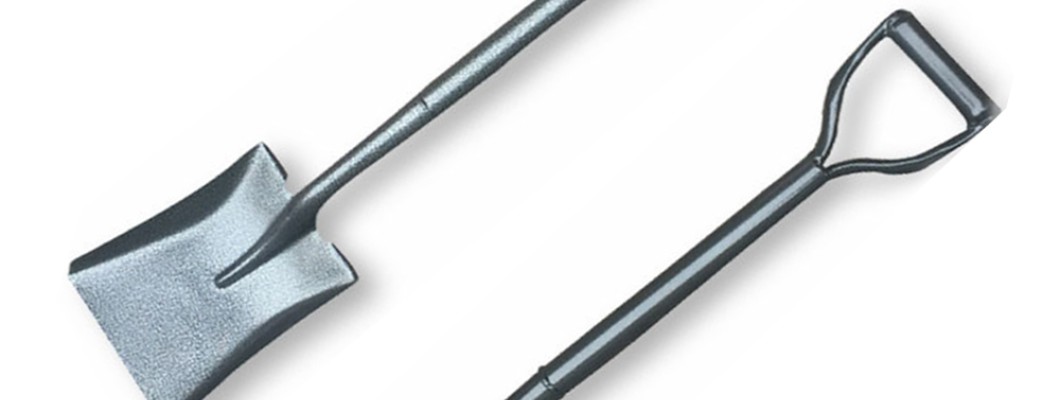
Metal manufacturing is a complex process. Raw materials go on quite a journey—from the mill all the way to the end user. During this production process, the metal changes hands multiple times before fully transforming into a finished product. With so many steps and parties involved, how can you ensure the metal's quality stays consistent every step of the way? The answer lies in heat numbers.
WHAT ARE HEAT LOTS?
Heat numbers, also known as heat lots, are identification codes stamped on metal plates. They play an important role in verifying consistent metal quality from start to finish. These numbers show that each batch meets the manufacturer’s standards and required specifications for that specific metal. Essentially, heat numbers enable producers to trace each production run, facilitating proper quality control checks at every stage of the process.
WHY ARE HEAT LOTS IMPORTANT? Metal material stacked into a pile
Heat numbers are crucial in certifying the quality of metal coils arriving at service centers. When a massive coil gets delivered straight from the mill, its heat number validates that the metal meets standards.
Each coil also comes with a Mill Test Report containing key background details, including the origin of the raw source material and the coil’s specific chemical and physical properties. This information is crucial for both quality control and compliance reasons.
Some overseas mills, unfortunately, don’t fully disclose a metal’s true mining source or composition. But for ensuring quality control and compliance, those specifics must be documented. Heat numbers help ensure that vital data gets reported accurately.
WHAT ARE MATERIAL TEST REPORTS (MTRS) VS. MILL TEST REPORTS (MTRS)?
Material Test Reports (MTRs) act like a metal’s rap sheet. They document that the received metal fits all the correct specifications, including data on mechanical properties, chemical makeup, and more.
Mill Test Reports (MTRs) also certify that the metal meets specifications, but they specifically come from the mill that produced the metal. Mill test reports include details like the metal’s chemical composition and physical properties based on testing conducted at the mill.
Both types of reports come directly from whoever performed the testing, whether that is a third-party testing facility or the mill itself. The transparency provided by Material Test Reports and Mill Test Reports helps ensure quality and compliance across the metal supply chain.
Metal manufacturing is a complex process. Raw materials go on quite a journey—from the mill all the way to the end user. During this production process, the metal changes hands multiple times before fully transforming into a finished product. With so many steps and parties involved, how can you ensure the metal's quality stays consistent every step of the way? The answer lies in heat numbers.
WHAT ARE HEAT LOTS?
Heat numbers, also known as heat lots, are identification codes stamped on metal plates. They play an important role in verifying consistent metal quality from start to finish. These numbers show that each batch meets the manufacturer’s standards and required specifications for that specific metal. Essentially, heat numbers enable producers to trace each production run, facilitating proper quality control checks at every stage of the process.
WHY ARE HEAT LOTS IMPORTANT? Metal material stacked into a pile
Heat numbers are crucial in certifying the quality of metal coils arriving at service centers. When a massive coil gets delivered straight from the mill, its heat number validates that the metal meets standards.
Each coil also comes with a Mill Test Report containing key background details, including the origin of the raw source material and the coil’s specific chemical and physical properties. This information is crucial for both quality control and compliance reasons.
Some overseas mills, unfortunately, don’t fully disclose a metal’s true mining source or composition. But for ensuring quality control and compliance, those specifics must be documented. Heat numbers help ensure that vital data gets reported accurately.
WHAT ARE MATERIAL TEST REPORTS (MTRS) VS. MILL TEST REPORTS (MTRS)?
Material Test Reports (MTRs) act like a metal’s rap sheet. They document that the received metal fits all the correct specifications, including data on mechanical properties, chemical makeup, and more.
Mill Test Reports (MTRs) also certify that the metal meets specifications, but they specifically come from the mill that produced the metal. Mill test reports include details like the metal’s chemical composition and physical properties based on testing conducted at the mill.
Both types of reports come directly from whoever performed the testing, whether that is a third-party testing facility or the mill itself. The transparency provided by Material Test Reports and Mill Test Reports helps ensure quality and compliance across the metal supply chain.
HOW TO MEET METAL COMPLIANCE STANDARDS WITH HEAT NUMBERSMetal manufacturing employee standing at a machine
With the transparent information from Mill Test Reports, heat numbers become a valuable compliance tool. The paperwork trail helps verify that only quality metal from reputable mills enters each supply chain step.
This provides necessary checks and balances for today's complex, global metal industry. Heat numbers enable manufacturers to maintain consistent quality and meet compliance standards across borders.
-505x159.png)
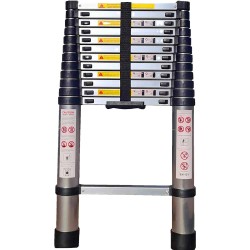
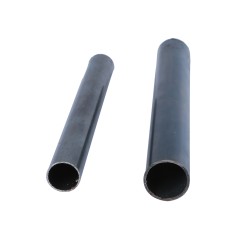
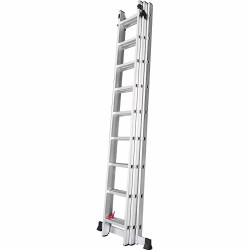
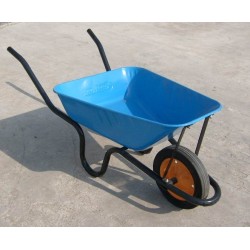
133 Comment(s)
gdfh
sdfrveif dwcs
sdfdfgbeg wecwc
Wow, fantastic blog layout! How lengthy have you ever been blogging for? you made running a blog look easy. The whole look of your website is wonderful, well the content material!
Wow, fantastic blog layout! How lengthy have you ever been blogging for? you made running a blog look easy. The whole look of your website is wonderful, well the content material!
We provide support for those looking for 'Take my GED for me' or 'Take my TEAS exam' solutions. Need help with your GED or TEAS exam? We offer services so you can pay someone to take your GED or TEAS exam, hire someone for exam assistance and solutions.
Are you looking for who will 'Write My Dissertation For Me?' We provide support for those looking for 'Dissertation Writing Services' or 'Dissertation Help'. We offer services so you can 'Pay Someone To Do Your Dissertation'.
Seeking a reliable SEO company in Stockholm for SEO optimization, online marketing, website design, Google Ads management, Social Media, USA, UK, Australia, UAE.
Quran Online Teaching with Tajweed regardless of your location with our experienced Quran teachers online. Book free trial!
I certainly did not realize that. Learnt something new right now! Thanks for that.
hello i discovered your post and thought it was very informational likewise i suggest this site about repairing lap tops Click Here
he he i love catfights that is why i love Amanda Bynes. i think that she is a very humble woman too-
Thank you for sharing with us, I conceive this website really stands out.
You could definitely see your skills in the work you write. The world hopes for more passionate writers like you who aren’t afraid to say how they believe. At all times follow your heart
I’m seriously impressed with the content layout and stream quality. It’s hard to believe such a clean and fast site exists in this space. I’ve watched La Liga, IPL, and even some boxing matches here without issues.
https://pgslot.bingo/pgslot6g/
https://pgslot.bingo/pgslot-work/
I really appreciate the effort you put into this article. Thank you
UNICCM structures its academic offerings around the demands of modern employers and global learners. Each programme features a balanced mix of theory, application, and guided assessment. Qualification levels span from Level 3 to Level 7, meeting criteria for both entry-level and experienced professionals. Certificates meet regulatory compliance and industry expectations. Courses are available in health & safety, construction management, and IT systems.
When I decided to ship my car to another state, I was concerned about delays and damage. But to my surprise, the entire process was seamless. The company I chose provided detailed tracking and maintained clear communication. The car arrived safely and even earlier than expected. If you’re moving or selling a car out of state, I highly recommend looking into auto transport services. It’s safer and more efficient than you think.
Thanks for sharing this amazing article, it is a very informative post good work keep it up.
I find op사이트 순위’s regular updates make the rankings very reliable.
opstar’s creative editing features are very powerful.
신용카드현금화 is a convenient option for cash emergencies.
The future of education looks bright with Chat GPT 교육 involved.
I'm wondering if 다바오 머니상 has any hidden charges.
It’s great that SkyfunVR’s machines seem suitable for both indoor and outdoor setups. This flexibility means operators can cater to different event types, from mall installations to mobile fun fairs.
we should always be very careful about getting hepatitis because this disease is very very dangerous and deadly~
Exploring the world of reeds courses can be a great way to enhance your career or discover a new interest. Uniccm shares how Reed has become a go-to platform for online and in-person learning. With thousands of options across categories like business, healthcare, and IT, there’s something for everyone. It’s perfect for professionals looking to upskill or individuals diving into something completely new. Uniccm’s guide offers insights on how to choose the right course for you.
The adjustable pet leashes with padded handles caught my attention. They seem perfect for both small and large dogs. The quality and design look very premium, especially for wholesale suppliers.
With a 링크사이트, I can easily share my curated collections with friends.
구글상위노출을 하게 된다면 당신의 사업의 매출은 매우 증가하고 앞으로 미래전망 있는 온라인 시대에서 살아남을 수 있다고 확신합니다!
주소모음 has made my online browsing experience so much more efficient.
YINRICH’s wide global footprint proves the reliability of your machines. If companies from Europe to Asia trust you, that speaks volumes about your consistency and service.
신용카드현금화 offers a unique way to manage urgent financial needs.
https://meetgle.com/tinychat/
티비위키 makes it simple to stay updated on my favorite series.
I'm so grateful for 주소모음; it has truly transformed my browsing habits.
UltraShieldX is a trusted brand in Car Paint Protection Film, offering high-quality coating to protect your car’s paint from scratches, UV rays, and stone chips. Known for its glossy finish and self-healing technology, UltraShieldX keeps your car looking new for years.
The covers a broad curriculum at the College of Contract Management is intended to provide you the experience and necessary abilities to be successful. No matter your level of experience or desire to further your career, their expert training will enable you stand out in a crowded industry. By taking quantity surveyor course online, you may be able to influence your future in the construction sector. As quantity surveyors, we control project costs, maintain balanced budgets, make sure everything occurs as planned, and satisfy client requests. Online quantity surveying courses are a ingenious and flexible way to get started if you want to learn more or go into this fascinating field.
A quick and seamless Jalwa Game Login is essential for a game that I play during short breaks, as I don't want to waste time with a complicated process."
What sets Jalwa Game apart is how user-friendly it is, making it easy for me to start playing right away without any confusion." This comment praises the platform's accessibility and ease of use.
I'm a new user, and I was impressed by how easy the Jalwa Game Login was, making the app very accessible." This comment focuses on the user-friendliness for beginners.
I appreciate that Jalwa Game offers a no-pressure environment; it’s all about learning at your own pace and enjoying the process." This comment highlights the relaxed and non-competitive nature of some of the apps.
At Sarv Wellness, we offer authentic Tantra Therapy designed to restore balance, harmony, and deep healing. Rooted in ancient traditions and adapted to modern lifestyles, our therapy focuses on unlocking inner energy, reducing stress, and enhancing emotional well-being. Whether you seek relaxation, spiritual growth, or energy alignment, our expert practitioners create a safe and nurturing environment. Discover the transformative power of Tantra Therapy at Sarv Wellness and experience a journey of self-discovery, mindfulness, and complete rejuvenation.
부산 유흥의 모든것! 부산비비기 https://busanbibigi.site 로 오세요!
Unmanned Cafe Essential Equipment: Key Items for Efficient Operations 무인카페창업정보
How to effectively teach a dog a name - Beginner's Guide 반려견훈련법
Dyson vs Samsung Wireless Vacuum Cleaner Comparison: Who's Ahead in Performance and Price? 무선청소기비교
2023 Best wireless earphones recommendations: After use and product comparison Guide 무선이어폰추천
Meditation App Recommendations: Best Choice Guide for Beginners 명상앱추천
Electric Kickboard Safety Tips: Micro Mobility and Shared Kickboard Tips 전동킥보드정보
Bitcoin: Pioneers Of Digital Currency - History, How It Works, Future Prospects 디지털화폐전망
Choose the robot vacuum cleaner for your house: Best Model Guide by Size 로봇청소기추천
Recommendations for Day Hiking Places near Seoul: Exploring Healing Course in Nature 등산코스추천
Advantages and Disadvantages of Digital Nomad Life: Free Work vs Realistic Challenges 디지털노마드
Video Editing Beginner's Guide: Essential Tips and Tools for Getting Started 동영상편집초보
How to Manage Brain Health: Brain Revitalize With Daily Health Routine 뇌건강관리
Public Transport Discount Cards: The best choice to save money on transportation 대중교통할인카드
Laptop Bag Recommendation: Style and Protection at the same time 노트북가방추천
Men's Hair Style Recommendation: Charm Upgrade and Battery Care Tips 남성헤어스타일
Introductory Golf Tips: A Practical Guide for Beginners and a Used Car Door Parable 골프입문팁
Air Purifier Recommendation: Best Choice and Shopping Mall Startup Tips for Pleasant Space 공기청정기추천
Marriage Checklist: Step-by-step requirements 결혼준비체크리스트
Health-style balance: Men's clothes that fit for men's clothes 건강식레시피
Health Checkup Items: Taking care of your health with essential tests and customized tips 건강검진팁
Romantic Autumn Train Trip: A Romantic Journey With Autumn Leaves 가을여행지추천
Smartwatch must-have: workout tracking and heart rate measurement perfect guide 가성비스마트워치
SNS Marketing Strategies: A Practical Guide to Brand Growth SNS마케팅
40s Health Care: Essential Habits to Overcoming Body Change 40대건강관리
1 person living tips: Digital currency forecast for digital currency forecast 1인가구생활
Introductory Baseball Tips: Key Points For Beginners To Know 야구입문팁
Rest-tel site through massage 휴게텔 사이트
Unlike other words, stable platform recommendations, stable platforms 달림사이트 순위 추천
OP Choices, Dalamsite Recommendations Make It Easier 달림사이트 순위 추천
Check here to find the Officetel address! 오피스타(https://getopstarturl.online) .
If you want to know the opguide address, come here! getopguideurl.online 오피가이드.
To learn about Dongtan's 'hugyeteol,' come here to https://huegyerest.com 동탄휴게텔.
Recently, major adult community sites, including Kitamnet, have been affected by repeated domain blockings, resulting in frequent address changes. 키탐넷 최신주소
미니멀 옷장 만드는 남자들의 공간 https://minwardrobe.com.
오피뷰 주소 안내
OPVIEW ADDRESS GUIDE | OPVIEWGUIDE stands for **private therapy establishment** operating in an officetel. It features 1:1 customized service in small spaces. This personalized healing is gaining huge popularity among those who just want to enjoy their own time in a busy daily life. The programs offered are very diverse, such as massages, spas, and skincare, and each establishment enhances customer satisfaction in a different way. 오피뷰 주소 안내 | OPVIEWGUIDE
The learning platform provides systematically organized, objective-oriented educational content while maintaining accommodation for individual scheduling constraints. Participants submit written assessments to the College of Contract Management, functioning as the designated course administrator, for rics online cpd submission processing. This methodology permits adequate time for revisions subsequent to assessor review and commentary provision before final authorization. The program is optimally designed for professionals seeking competency advancement without professional departure. Participants should reference the college's website for essential submission and assessment timeframes pertaining to evaluation and interview requirements.
Pohang OP Introduction - A Kind Guide to Your First Visit 포항 오피
Ulsan OP Perfect Guide: Tips and Information for Smart Choices 울산 오피
Jeju OP Perfect Guide: Tips and Information for Smart Choices 제주 오피
Ansan OP: The choice for the perfect private break 안산 오피
Uijeongbu OP: Private Rest in a Busy Daily Life 의정부 오피
The vibrant city of Daegu returns busily from day to night. In the meantime, there are times when you pause and desperately want a completely personal break. 대구 휴게텔
Pyeongtaek OP - Perfect Privacy Found in Complex Cities 평택 오피
Seosan OP - Perfect Privacy Found in Complex Cities 서산 오피
Gumi Opi is the perfect escape to revitalize your tired daily life. With its top-notch facilities and classy services, it relieves stress and fatigue all at once. 구미오피
Gumi Opi Honest Review: Tips for Satisfaction from Real Experience 구미오피
OP View Address How many different regions of OP are introduced. 오피뷰 주소
Busan OP
Don't wander anymore. Here's the perfect break you've been looking for.
In the ever-changing flood of information, it's not easy to find truly reliable choices. 부산 오피
Struggling to find truly reliable Gunsan OP information in a sea of confusing information? Now waste no more time and energy. Our Gunsan OP will meet all your expectations by providing the best information proven with strict standards and unrivaled insights. 군산 오피
Leggings Room: Managers come into Choice as leggings. After receiving a guest's choice, during Greetings, they change their top into see-through mesh see-through tops. 강남레깅스룸
Your exhausting day in Daejeon, you've been wondering where to get real comfort and recharging. Now put down your worries about uncertain information and disappointing experiences. 대전 오피
There were many cases where it was difficult to find a reliable, satisfactory OP in Gwangju, and there was a lot of information, but it was hard to trust, right? 광주 오피
I dream of a perfect rest and new experience just for you in my busy daily life, but you must have been at a loss where to start. 순천 오피
In the accelerated life of the modern society, we often lose ourselves. Suwon Restel provides the optimal premium healing solution for your mind and body to fully relax and recover beyond just space. 수원 휴게텔
Have you ever wondered where to find true satisfaction in a flood of information? You may have experienced disappointment, wasting time and energy on unproven information. 전주 오피
There are times when you pause in your busy daily life and feel desperate for a special time to recharge completely just for you. 원주 오피
How much time have you wasted trying to find a truly satisfying experience in Andong? To avoid getting lost amid uncertain information and unverified options 안동 오피
Amid a flood of information, finding truly satisfying premium services is not an easy task. If you face uncertainty, wasting time and energy, don't hesitate anymore. Iksan OP exists to provide the perfect experience you have dreamed of. 익산 오피
Amid the constant stress and fatigue, are you longing for a true rest? The Bucheon Restoration Hotel exists beyond just space to deeply understand your body and mind and provide the best healing. 부천 휴게텔
Our site brings everything about Gimpo OP in one place, so we're ready to save your time and increase your satisfaction. That's where the best choices start! 김포 오피
Have you scrolled through all kinds of sites to find your "favorite" OP in Gwangyang? Even the hard-won information has become an "old story," right? 광양 오피
This is the "ultimate haven" that will recharge your soul to perfection and fill your energy to move back into the world. Don't worry, I'll hold both your wallets and your satisfaction. 원주 휴게텔
Chuncheon Restell, a special secret base to reset your body and mind! Don't fight against the mirror with your tired face anymore. It's time to laugh! 춘천 휴게텔
Yeongdeungpo OP promises to be the best choice to bring deep calm and revitalize your body and mind beyond just space. 영등포 오피
Looking for Sillim OP, were you at a loss as to where to start? I understand how difficult it is to find out where you can really trust from among tons of information. 신림 오피
Our platform promises to provide transparent, accurate, and selected information to anyone looking for Seongnam OP information, thereby relieving fatigue in information search and serving as a criterion of trust to help make optimal choices. 성남 오피
Our Anyang OP exists for you just like that. Beyond just resting, we promise you a premium experience that can restore true vitality and recharge your life's energy. 안양 오피
Yongin OP was created to solve these problems. We promise to be a reliable partner to guide you through the best choices so that your precious time and money are not wasted, beyond simply listing business information. 용인 오피
Looking for a premium OP in the Ochang area? We're done wasting precious time and money on unproven choices amid tons of information. 오창 오피
If you're looking for a place to truly relax and revitalize your body and mind at the end of a busy day, you've come to the right place. We go beyond just providing information, and we insist on only selected business information to ensure that each and every customer's precious time is filled with the best satisfaction. 목포 오피
Gangnam Resttel will be the perfect resting place for you only. Beyond just relaxation, restore your energy through a deep experience of recharging and healing, and start here getting ready for a better tomorrow. 강남 휴게텔
Shirt rooms first appeared in Gangnam in the mid-2010s. Known at the time as the lingerie shirt room, the business sparked men's romance with its "greeting" system, in which waitresses dressed in white shirts in front of customers. 강남셔츠룸
The Gangnam Shirt Room has firmly established itself as the core of the Gangnam night culture. Based on the know-how accumulated over a long history, the company introduces transparent managers with transparent prices and high quality 강남 셔츠룸
Are you looking for Gangseo OP? Aren't you tired of wandering around information and making uncertain choices? Waste no more precious time and energy. 강서 오피
Looking for the perfect experience in Konkuk University? Amid the deluge of information, you may have been unsure which places would truly live up to your expectations and which choices would provide you with unrepentant satisfaction. 건대 오피
Finding a 'place' that truly meets your expectations amid tons of information can sometimes feel like a challenge. But that's it for you. Paju OP 파주 오피
Beyond just listing information, Pangyo OP is the most reliable partner to accompany you on a journey to understand your deepest needs and discover the best space for a successful future. 판교 오피
Were you a lost lamb in a jungle sea of Nonsan OP information? Amid the constant stream of uncertainty, you wondered, "Is this right?" It's time to anchor your concern. We're not just informants. 논산 오피
Now waste no more time in the midst of uncertainty. Here's the answer to the perfect choice to shine through your precious time. We explore all the possibilities of the Geoje area, selecting only the best experiences and presenting them to you. 거제 오피
Beyond just space, the lactation lounge promises a private resting place where your body and mind can fully recover and rejuvenate. Experience the value of real rest right now at the lactation lounge, the perfect oasis where you can only focus on yourself from the noise of the city. 수유 휴게텔
Starting from this awareness of the problem, Seongnam Restel intends to provide an in-depth healing experience beyond simple rest 성남 휴게텔
The Changwon Resting Hotel will go beyond being just a resting place and become a true resting place that gives you the best moment you deserve, the perfect recharge and vitality. 창원 휴게텔
A tiring day, do you need something special? Then you're welcome! Gangneung Restoration Hotel is not just a shelter, but an oasis of magical relaxation that will blow away all your fatigue. We promise you a true happiness charging station. 강릉 휴게텔
Our "Sangbong OP" promises to be the only platform to save your precious time and effort. Here, you can find transparent, in-depth information that exceeds all your expectations. 상봉 오피
not just a slick place, your search is over right now. Dangjin RestTel promises you the best experience that will go beyond just providing information. 당진 휴게텔
In an ever-repeating busy day, it's not easy to find a time of truly full rest and recharging just for you. 순천 휴게텔
Gangneung Restoration Hotel is not just a shelter, but an oasis of magical relaxation that will blow away all your fatigue. We promise you a true happiness charging station. 강릉 휴게텔
Leave a Comment